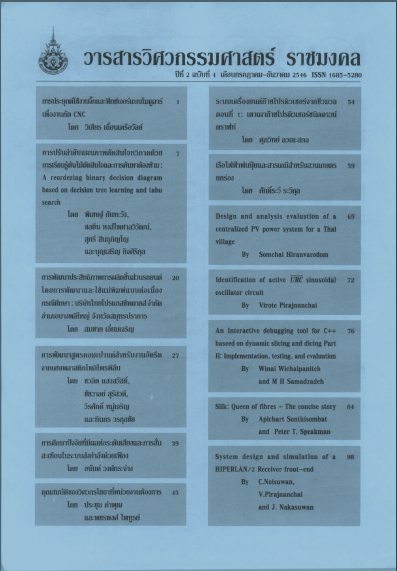System Design and Siimulation of a HIPERLAN/2 Receiver Frout-End
Main Article Content
Abstract
A simple method to model and simulate a Hiperlan/2 receiver front-end is presented. The heterodyne radio architecture is chosen to study due to its simplicity. For reference, the filter, the amplifier, and the mixer used in this linear system simulation have their paramenters set to values that are commercially available. Simulations employed a commercial CAD are used to investigate the receiver performance by injecting one-tone RF carrier of 5.2 GHz. Required standard HIPERLAN/2 of maximum sensitivities at -68 dBm and minimum at-20 dBm are injected into the designed system. A harmonic balance analysis is used to perform both frequency and time domains of the receiver. Verification in the frequency and time domains shows that the system is capable of designed in the power link budget under linear simulation environment. This means that a more complex circuit-level may by further implemented when standard test signals are added.
Article Details
The manuscript, information, content, picture and so forth which were published on Frontiers in engineering innovation research has been a copyright of this journal only. There is not allow anyone or any organize to duplicate all content or some document for unethical publication.
References
J. Chiangdee and T. Vanichasri, "A 2.4 GHz RF Front End for Digital Wireless Communication Transceiver in Bluetooth Radio Application," EECON 23", 23-24 November1996,pp. 345-348.
ETSI EN 301 893 V1.1.1.,"Broadband radio Hamonized EN covering essential requirements of article 3.2 of the R&TTE Directive," Jan 2001.
M. Loy, "Understanding and Enhancino Sensitivity in receivers for Wireless Applications," Technical Brief SWRAO30, Wireless Communication Business Unit, Texas Instruments, USA, pp. 1-77, May 1999.
htp://www.araftek.com


